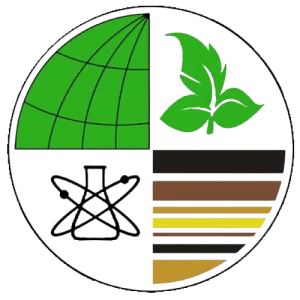Thermally activated serpentine materials as soil additives for copper and nickel immobilization in highly polluted peat
Marina V. Slukovskaya
1, 2, 3
,
Irina A Mosendz
1, 2
,
Tatiana K Ivanova
1, 2
,
Liubov A Ivanova
4, 5
,
Publication type: Journal Article
Publication date: 2022-04-12
scimago Q1
wos Q1
SJR: 0.871
CiteScore: 7.2
Impact factor: 3.8
ISSN: 02694042, 15732983
PubMed ID:
35412214
General Medicine
Environmental Chemistry
Environmental Engineering
Geochemistry and Petrology
General Environmental Science
Water Science and Technology
Abstract
Heat-treated serpentine products from mining wastes have been examined to remediate highly contaminated soil with total concentration of Cu 10470 mg/kg and Ni 5300 mg/kg. The series of laboratory and field experiments (for 10 years) were conducted. The modified Tessier method was used to assess the metals geochemical mobility. The effect of hydration on the chemical stability of the components and sorption properties of thermally activated serpentine were studied. The hydration of heat-treated serpentine decreased the leaching of the main components (Mg and Si) that indicates their partial binding in a newly formed compound—magnesium silicate. Hydration of heat-treated serpentine did not lead to the changes in the phase composition and the geochemical mobility of the precipitated Ni and Cu compounds. The hydration affected the sorption value at the 1 day of the interaction but after 30 days this difference partially leveled. A laboratory experiment showed that thermally activated serpentine was effective for the Cu and Ni sorption from sulfate solutions. The substantial changes in chemical properties of soil mixtures after ten years of the field experiment were found. In the first year of the field experiment, the pH values of soil mixtures were alkaline (9.4–9.9) and were significantly higher compared to the pH 4.0 of the initial peat soil. Over 10 years, the soil pH at the experimental sites gradually decreased and reached values of 7.2–8.6. The introduction of thermoactivated serpentines led to a decrease in the share of the most mobile exchangeable fraction. The most noticeable effect of thermoactivated serpentines on metal mobility in the polluted peat soil revealed for Cu; its migration coefficient decreased from 1.8 in the peat soil to 0.7 in the mixtures with heat-treated serpentines. The sum of Cu mobile fractions in the experimental variants became lower compared with initial peat by 50–70%, while Fe was lower by 30%, and Zn—by 80%. The increase in the proportion of the most strongly bound fraction was observed for all metals in the experimental variants compared with initial soil. The coefficient of metal accumulation for Ni and Cu was significantly lower than 1, indicating protective mechanisms in plants. The high content of mobile Mg and Ca compounds seems to be the determining factor in this process. The grass communities forming in the 10-years experiment showed high productivity and stability even under constant airborne industrial pollution. The thermally activated serpentine minerals can be recommended for the in situ remediation of landscapes with completely lost vegetation during the long-term impact of industrial emissions.
Found
Nothing found, try to update filter.
Found
Nothing found, try to update filter.
Top-30
Journals
|
1
2
|
|
|
Toxics
2 publications, 20%
|
|
|
Materials
1 publication, 10%
|
|
|
Environmental Geochemistry and Health
1 publication, 10%
|
|
|
Doklady Earth Sciences
1 publication, 10%
|
|
|
Russian Journal of Applied Chemistry
1 publication, 10%
|
|
|
Russian Journal of Ecology
1 publication, 10%
|
|
|
Soil Systems
1 publication, 10%
|
|
|
Applied Surface Science
1 publication, 10%
|
|
|
Journal of Hazardous Materials
1 publication, 10%
|
|
|
1
2
|
Publishers
|
1
2
3
4
|
|
|
MDPI
4 publications, 40%
|
|
|
Pleiades Publishing
3 publications, 30%
|
|
|
Elsevier
2 publications, 20%
|
|
|
Springer Nature
1 publication, 10%
|
|
|
1
2
3
4
|
- We do not take into account publications without a DOI.
- Statistics recalculated weekly.
Are you a researcher?
Create a profile to get free access to personal recommendations for colleagues and new articles.
Metrics
10
Total citations:
10
Citations from 2025:
3
(30%)
Cite this
GOST |
RIS |
BibTex
Cite this
GOST
Copy
Slukovskaya M. V. et al. Thermally activated serpentine materials as soil additives for copper and nickel immobilization in highly polluted peat // Environmental Geochemistry and Health. 2022. Vol. 45. No. 1.
GOST all authors (up to 50)
Copy
Slukovskaya M. V., Kremenetskaya I. P., Mosendz I. A., Ivanova T. K., Drogobuzhskaya S. V., Ivanova L. A., Novikov A. I., Shirokaya A. A. Thermally activated serpentine materials as soil additives for copper and nickel immobilization in highly polluted peat // Environmental Geochemistry and Health. 2022. Vol. 45. No. 1.
Cite this
RIS
Copy
TY - JOUR
DO - 10.1007/s10653-022-01263-3
UR - https://doi.org/10.1007/s10653-022-01263-3
TI - Thermally activated serpentine materials as soil additives for copper and nickel immobilization in highly polluted peat
T2 - Environmental Geochemistry and Health
AU - Slukovskaya, Marina V.
AU - Kremenetskaya, Irina P
AU - Mosendz, Irina A
AU - Ivanova, Tatiana K
AU - Drogobuzhskaya, Svetlana V.
AU - Ivanova, Liubov A
AU - Novikov, Andrey I.
AU - Shirokaya, Anna A
PY - 2022
DA - 2022/04/12
PB - Springer Nature
IS - 1
VL - 45
PMID - 35412214
SN - 0269-4042
SN - 1573-2983
ER -
Cite this
BibTex (up to 50 authors)
Copy
@article{2022_Slukovskaya,
author = {Marina V. Slukovskaya and Irina P Kremenetskaya and Irina A Mosendz and Tatiana K Ivanova and Svetlana V. Drogobuzhskaya and Liubov A Ivanova and Andrey I. Novikov and Anna A Shirokaya},
title = {Thermally activated serpentine materials as soil additives for copper and nickel immobilization in highly polluted peat},
journal = {Environmental Geochemistry and Health},
year = {2022},
volume = {45},
publisher = {Springer Nature},
month = {apr},
url = {https://doi.org/10.1007/s10653-022-01263-3},
number = {1},
doi = {10.1007/s10653-022-01263-3}
}











